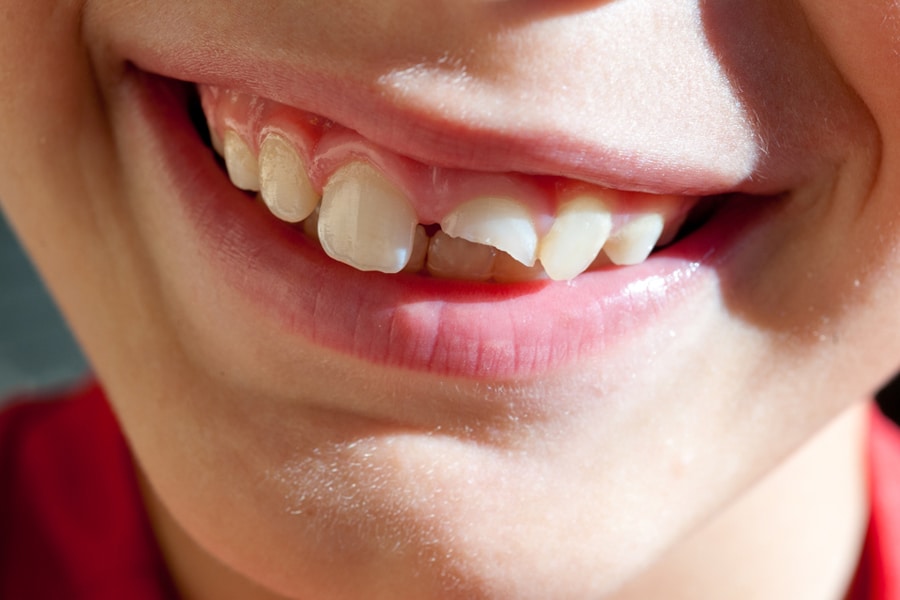Did you know that Americans spend more than $110 billion annually on oral healthcare? One common dental problem is having a broken tooth. If you experience a broken tooth it is important to promptly visit the dentist. We will explain the common types of damage, the potential treatment options, and the estimated costs.
Having an Existing Crack in a Tooth
If you have a crack in a tooth it is likely to fracture under pressure at some point. Some cracks might not be visible, such as those inside a tooth or below the gum line. A crack may create pain or discomfort.
A crack in the tooth creates potentially harmful exposure that can lead to a fracture or tooth loss. Cracks often result in damage to sensitive nerves and structural tissue. Small cracks or chips may have mild symptoms or be mistaken for a cavity.
When is Immediate Treatment Needed?
A minor break in a tooth may be primarily a cosmetic problem. Always use caution when you are unsure of the severity of a broken tooth. Your dentist has the expertise and equipment for evaluating.
Prompt treatment is critical when there is significant pain or bleeding. A dentist can magnify the view of your tooth to assess the damage or use X-rays. There are no truly effective “home remedies” for treating a broken tooth. The sharp edge of a broken tooth can also result in further damage.
Responding to a Broken Tooth
If you suddenly break a tooth you may want to rinse your mouth with warm water or saltwater. To stop any bleeding, you should apply pressure. A cold compress may help to reduce inflammation.
If the tooth has a sharp edge it can be temporarily covered with dental wax or chewing gum. Avoid eating hard foods if possible. Over-the-counter pain medication may help to reduce discomfort.
If you lose an entire tooth, save it in a piece of gauze and bring it with you for dental treatment. It is critical to avoid putting pressure on any area of the root or gum line, as doing so can create further damage.
Broken Tooth Repair Options
Your dental professional will advise you on the best potential options for treating a broken tooth. These are forms of restorative dental treatment that will also seek to prevent any type of infection.
Cosmetic Contouring
Minor chips in a tooth may be polished or resurfaced to create a new smooth edge. This is often referred to as contouring. In some cases, the chipped part of a tooth can be reattached. Most broken teeth will need some type of filling or bonding process.
Dental Bonding
Some small chips in the tooth’s enamel can be treated using a filling. Bonding refers to fixing a chipped tooth by using some type of adhesive and material to reshape it. Many minor bonding procedures are completed in a single visit without numbing agents.
Often the damaged tooth is in the front of the mouth where it is visible. This visibility creates potential cosmetic concerns. Here, a composite resin that is a similar color to your existing tooth may be used. A liquid or gel is used to bond the resin and an ultraviolet light hardens the finish.
Root Canal
A root canal therapy may be needed when the damage extends deep into the pulp of the tooth. This involves the removal of damaged pulp and sanitizing. A rubber-like material is used to fill and seal. The tooth is next covered with a filling or a crown.
In certain cases, a tooth will need to be extracted instead of having a root canal. If an extraction is necessary, an artificial replacement may need to be implanted. These implants generally appear and function similarly to a natural tooth.
Dental Crown
Teeth that are significantly damaged or that are decaying may need a crown. A crown can be described as a cap that covers part of an existing tooth. The material used in a crown may be metal, resin, ceramic, and more. The choice of material used varies based on the circumstances.
The process of obtaining a crown generally requires two office visits. During the first visit, an impression of the teeth may be made and sent to a lab. A temporary crown is provided between visits.
Estimating Tooth Repair Costs
The following are some estimated costs for treatment when paying “out-of-pocket” (without dental insurance):
- Dental Filling: CostHelper estimates that a resin filling will range from $90 to $450
- Dental bonding: CostHelper estimates that dental bonding procedures range from $300 to $1,000 depending on the circumstances. Spend on Health suggests that costs are between $100 and $1,000.
- Root canal: Spend on Health estimates that root canals cost between $1,500 and $2,000.
- Dental crowns: CostHelper estimates that crowns cost between $500 and $3,000. Spend on Health suggests the price range as being between $600 and $3,000.
Dental Insurance
According to the National Association of Dental Plans, more than 200 million Americans have some form of dental insurance. Dental insurance plans have many coverage options that relate to these forms of treatment. You should closely review the details of your plan.
Mesa-Area Dental Care Provider Repairs Damaged Teeth
Do you have a tooth that has been cracked, chipped or otherwise damaged? It is important to promptly seek professional dental treatment. At East Valley Dental Professionals, we maintain a comfortable environment and offer services for patients of all ages. Contact our office today for an appointment at (480) 838-3033.

